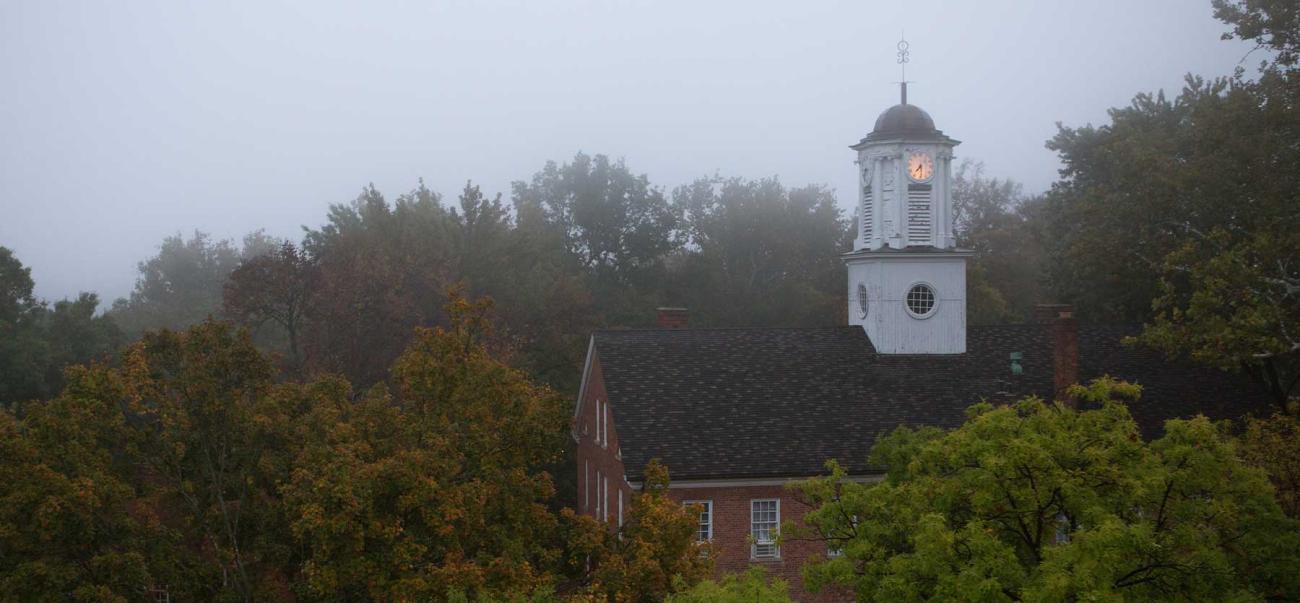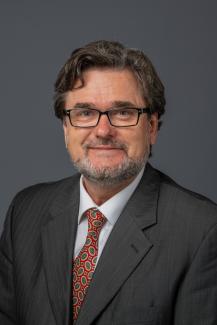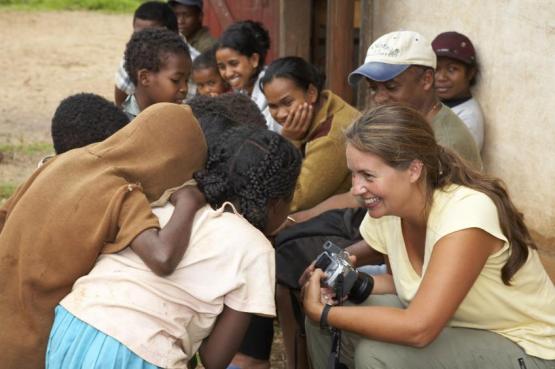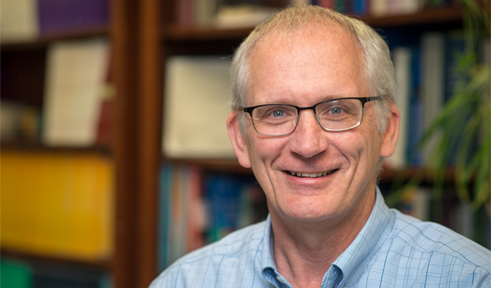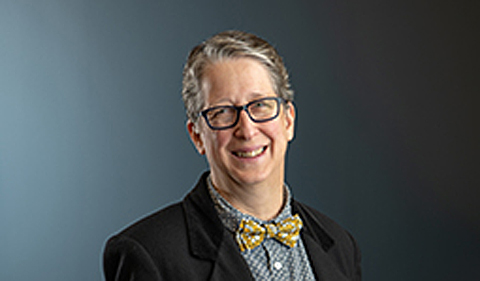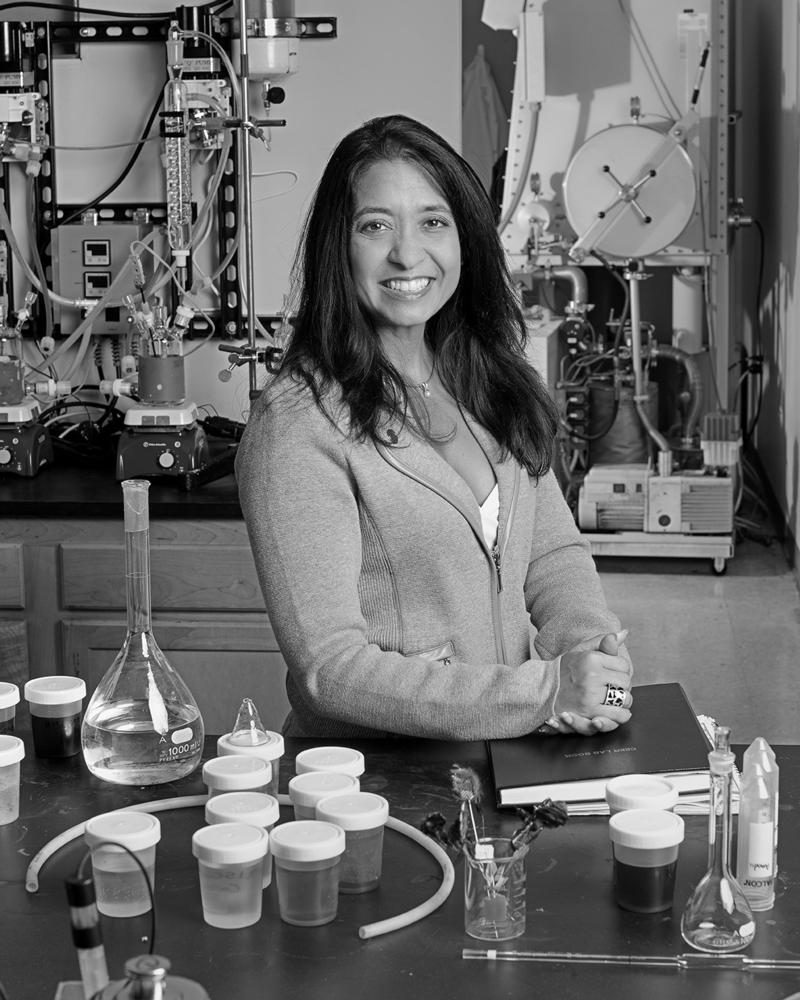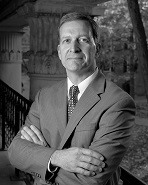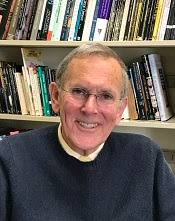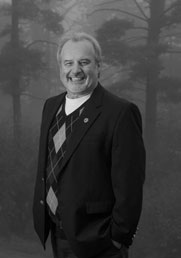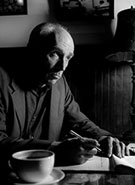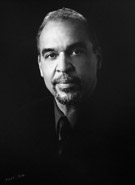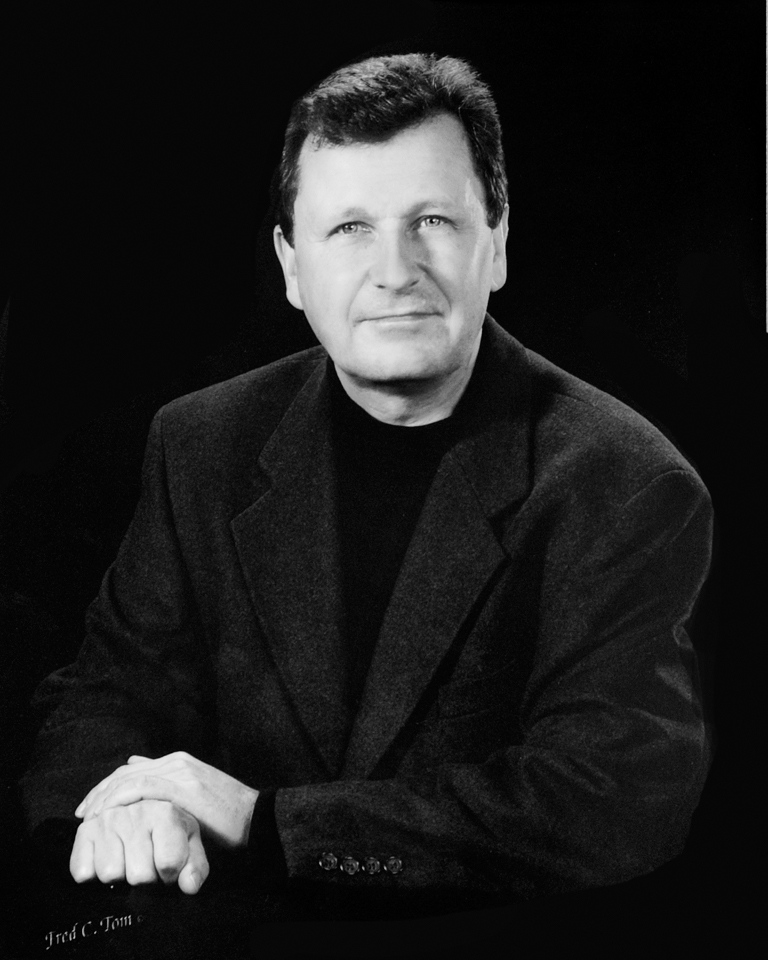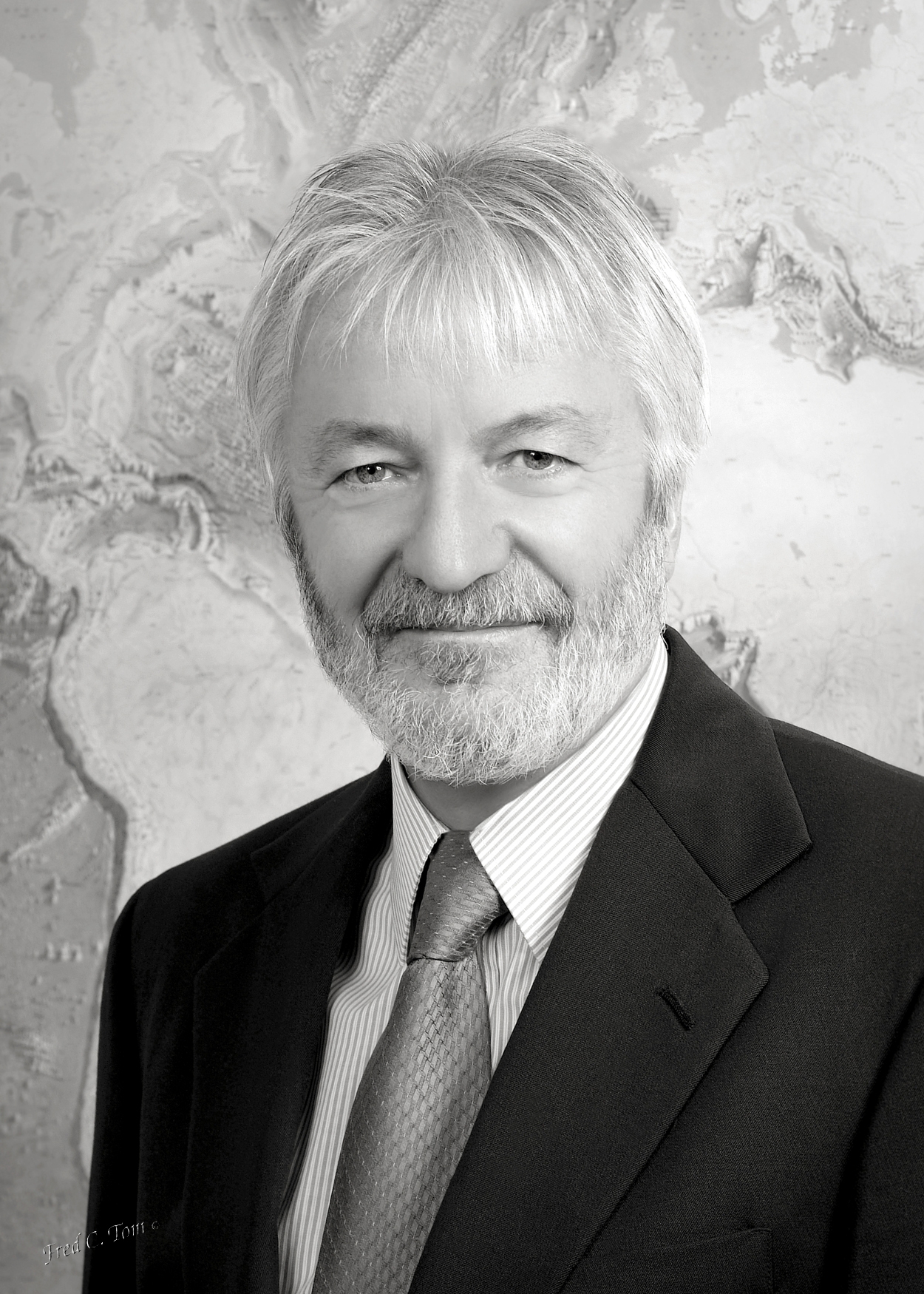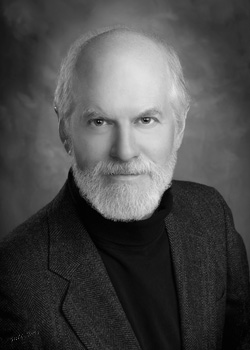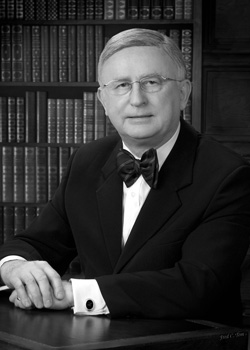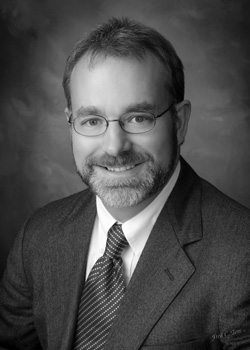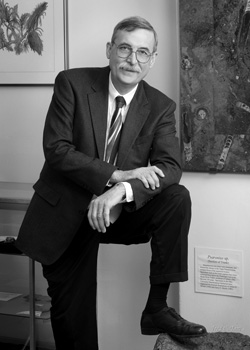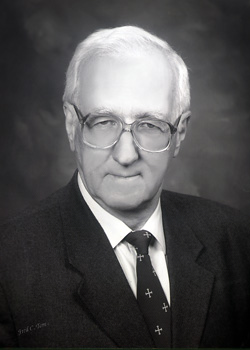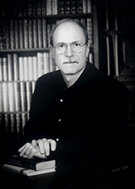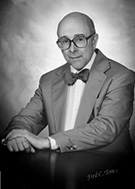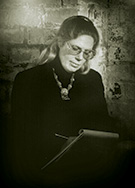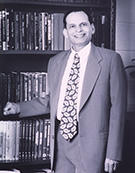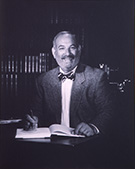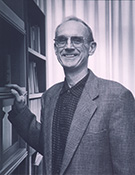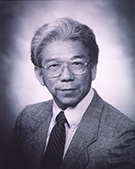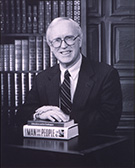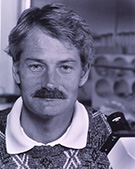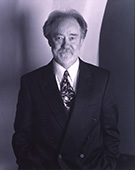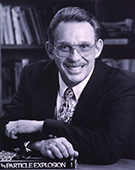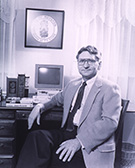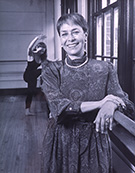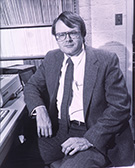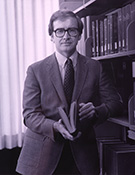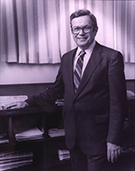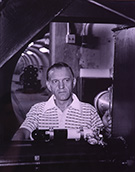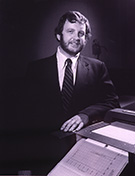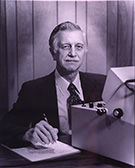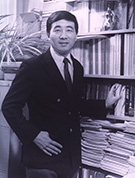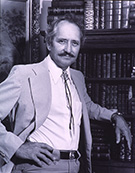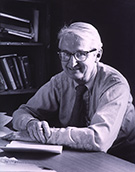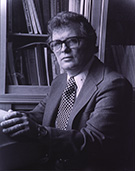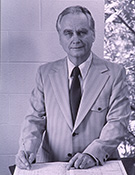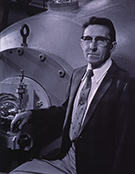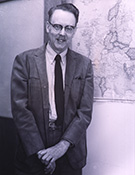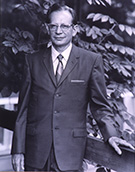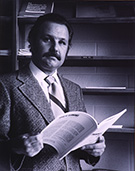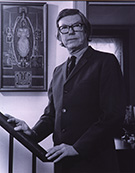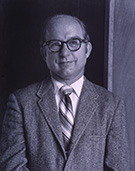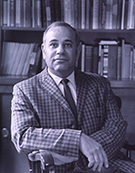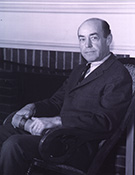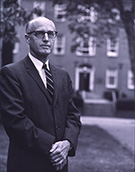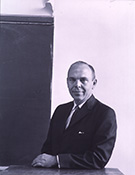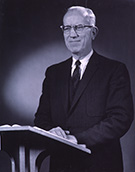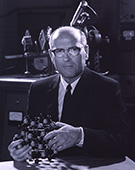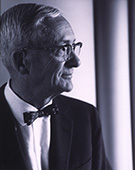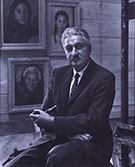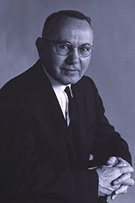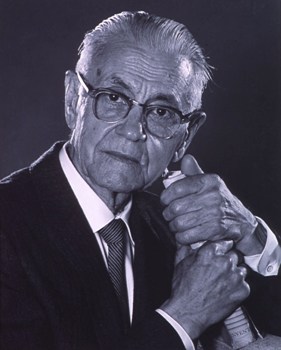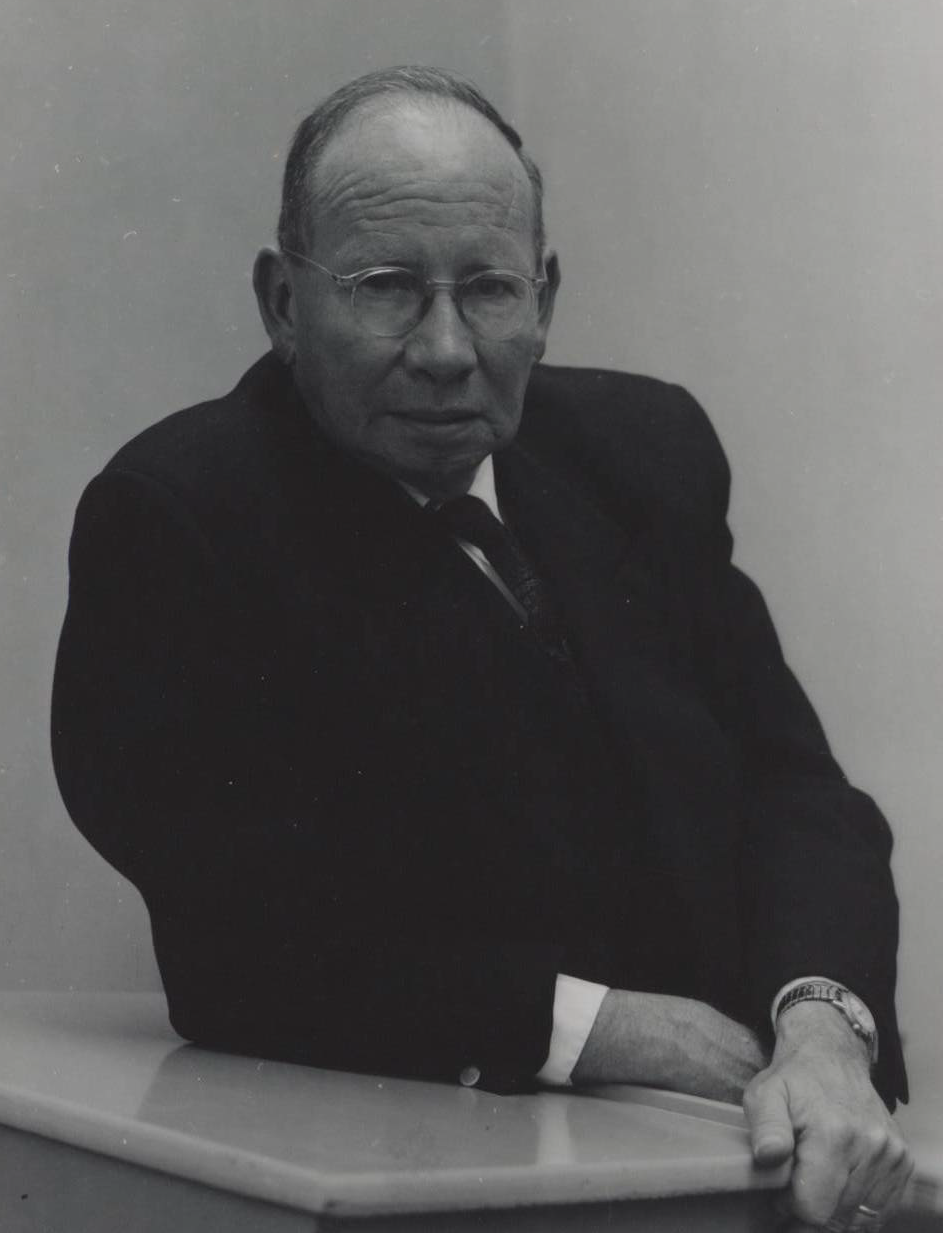Distinguished Professors (1959 to Current)
-
2021
Srdjan Nesic, Ph.D., Chemical Engineering, University of Saskatchewan, Russ Professor of Chemical Engineering
An expert in corrosion and fluid mechanics, Dr. Srdjan Nesic is director of the internationally-renowned Institute for Corrosion and Multiphase Technology, one of the largest corrosion research facilities in the world. He also serves as Russ Professor of Chemical Engineering in the Russ College of Engineering and Technology.
During his time at Ohio University, Dr. Nesic has graduated 36 Ph.D. students, 23 master’s students and mentored 40 or more postdoctoral researchers, many of whom are now accomplished academics in their own right, from more than 20 countries. He has published more than 150 peer-reviewed papers in leading international journals in his field and penned 18 book chapters and more than 240 peer-reviewed published conference proceedings articles. He is one of the most cited authors in the Russ College’s history, with more than 14,600 citations of his published work.
In addition, Dr. Nesic has raised more than $40 million in sponsored research funding, mostly from industrial sources in North and South America, the Middle East, Europe, Asia and Oceania. He is also a Fellow in NACE International – the world’s biggest association of corrosion engineers, and in 2007 received the prestigious H.H. Uhlig Award for excellence in corrosion education from NACE. Nesic also won the 2018 Willis Rodney Whitney Award for his contributions to corrosion science and education from NACE. Dr. Nesic also serves on the editorial boards of Corrosion and Corrosion Science, the two leading journals in the field.
-
2020
Nancy Stevens, Ph.D., Anthropological Sciences, Stony Brook University
-
Dr. Nancy Stevens is a professor of evolutionary ecology in the Heritage College of Osteopathic Medicine.
Stevens’ research explores extinction dynamics, documenting impacts of environmental change through time. She has conducted field research in more than a dozen countries in Africa and the Arabian Peninsula, discovering a number of species new to science. Many of her finds derive from the East African Rift System and include the oldest fossil evidence of the split between Old World monkeys and apes. Stevens and her students also conduct field research to explore extinction risks in modern biodiversity hotspots, documenting habitats that are rapidly shifting due to anthropogenic and natural environmental change in places including Madagascar, Uganda, and Vietnam. Her research is supported by the National Science Foundation and the National Geographic Society.
Closer to home, Stevens serves as co-lead of the OHIO Museum Complex, partnering with the Kennedy Museum of Art on The Ridges to integrate art, environment, innovation and health with everyday life. The Museum Complex celebrates interdisciplinary research and creative activity through vibrant exhibit galleries, experiential learning opportunities on The Ridges trail system, connections with the OHIO Observatory and Land Laboratory, and expanded curatorial space for unique and priceless collections from across the region and around the world.
-
2019
Steven W. Evans, Ph.D., Clinical Psychology, Case Western Reserve University, Co-Director of the Center for Intervention Research in Schools
Steven W. Evans is an award-winning professor in the Department of Psychology and is the Co-Director of the Center for Intervention Research in Schools in the College of Arts and Sciences. His research interests are focused on school-based treatment development and evaluation for adolescents with attention deficit hyperactivity disorder (ADHD) and related problems. He developed the Challenging Horizons Program, which is a school-based treatment for middle and high school youth with ADHD.
Evans has maintained federal research funding from the National Institute of Mental Health and the Institute for Educational Sciences to support this work for several years. He is a licensed clinical psychologist in Ohio and works with graduate students pursuing their Ph.D. in clinical child psychology. Through his work, Dr. Evans has made a commitment to providing high-quality training experiences that prepare undergraduate and graduate students to conduct interdisciplinary treatment outcome research and become effective practitioners.
A groundbreaking researcher and an exceptional professor, Evans earned his undergraduate degree from Bowling Green State University, master’s degree from Ball State University, and Ph.D., in clinical psychology from Case Western Reserve University. He has received several awards for his teaching and research, including being honored as a 2017 Presidential Research Scholar at Ohio University. A former special education teacher and director of various school mental health projects, Evans has served as the editor for five books, published more than 150 articles and book chapters, and is the editor of the journal, School Mental Health.
-
2018
Susan Burgess, Ph.D., Political Science, Center for Law & Justice, University of Notre Dame
Susan Burgess joined Ohio University in 2000 as an Associate Professor of Political Science and Director of Women’s, Gender, and Sexuality Studies, and is also affiliated with the Center for Law, Justice & Culture. She holds a Ph.D. in Political Science from the University of Notre Dame, and is a first-generation graduate of Northern Illinois University, with a B.A. in Political Science. Her path-breaking scholarship has transformed how American politics is studied in the United States and across the globe. Burgess’ work in the areas of law and court, politics and sexuality, popular culture, and radical politics has prompted scholars and professional associations to redefine and expand the boundaries of mainstream political science and interdisciplinary legal studies. Adopted by libraries in over 70 countries worldwide, her books include LGBTQ Politics: A Critical Reader (co-edited with Marla Brettschneider and Cricket Keating); The CQ Guide to Radical Politics in the United States (with Kate Leeman); The New York Times on Gay and Lesbian Issues; The Founding Fathers, Pop Culture, and Constitutional Law: Who’s Your Daddy? and Contest for Constitutional Authority: The Abortion and War Powers Debates. Her work has also appeared in various disciplinary and interdisciplinary journals. She has been cited in various news outlets such as The Atlantic, The New York Times, and The Wall Street Journal.
Burgess has held several leadership positions in the American, Western, and Midwest Political Science Associations. As part of the Perestroika movement in the American Political Science Association, her successful candidacy for a seat on its governing Council triggered an association-wide competitive election, challenging the longstanding system of top-down nomination. During her term, she created a new research section in Politics and Sexuality (with Angelia Wilson), the 38th organized section in the over 100 year history of the Association. She has sat on the editorial boards of several journals, and is currently co-editor of Politics, Groups, and Identities (an official journal of the Western Political Science Association) as well as Associate Editor of Politics and Gender (official journal of the Women and Politics Section of the American Political Science Association).
Burgess has received several departmental and university-wide awards for excellence in teaching, including the Honors Tutorial College’s 2018 Outstanding Tutor Award. Burgess is currently co-organizing a digital collective on LGBTQ politics that networks scholar-teachers drawn from universities and colleges across the world. Locally, she co-founded an endowed Women’s Fund within the Athens Foundation in 2006 which awards grants to non-profit organizations in the region that address the needs of impoverished women and children.
-
2016
Alexander Govorov, Ph.D., Physics of Semiconductors, Institute of Semiconductor Physics, Novosibirsk, Russia
Alexander “Sasha” Govorov joined Ohio University in 2002 as an associate professor. He is an esteemed physics professor and researcher, who is credited for starting the field of chiral plasmonics and plasmonic assemblies. He is considered to be an expert regarding the theory of optical properties of nanomaterials and nanostructures, and some of his more than 200 published works on the subject are highly-cited by academic peers. His research has appeared in top academic journals such as Nature and Physical Review Letters. Dr. Govorov has organized 16 national and international conferences since 2007. Dr. Govorov is frequently invited to participate in academic conferences. Between 2006 and 2016, he has been invited to give 80 talks regarding his research. Dr. Govorov is Fellow of the American Physical Society (2012) and a recipient of Bessel Research Award (A. v. Humboldt Foundation, Germany), Ikerbasque Research Fellowship (Spain), E.T.S. Walton Visitor Award (Ireland), 2013 Chang Jiang Chair Professorship of the Scholar Program of MOE of China, 2014 Jacques-Beaulieu Excellence Research Chair Award (INRS, Montreal), and 2015 Arts & Sciences Outstanding Faculty Research and Scholarship Award at Ohio University. Dr. Govorov is a well-regarded professor and colleague who teaches and mentors both undergraduate and graduate students, and collaborates widely with his peers.
Judith Yaross Lee, Ph.D., English Language and Literature, University of Chicago
Judith Yaross Lee is an award-winning professor and scholar who serves Ohio University as the Charles E. Zumkehr Professor and as the Director of Honors Tutorials in the School of Communication Studies. An interdisciplinary Americanist, she studies popular rhetorics in the contexts of media, social, political, and intellectual history, and is internationally recognized as an authority on American literary humor. She has written 60 essays and articles in scholarly books and learned journals, including The Mark Twain Annual and American Literary Realism, in addition to three well-regarded university-press books--Twain’s Brand: Humor in Contemporary American Culture, Defining New Yorker Humor, and Garrison Keillor: A Voice of America--which are in libraries in more than 50 nations around the globe as well as in every U.S. state and Canadian province. Her humanities research grants exceed $1.3 million, some of which endowed the Central Region Humanities Center that she directs. With various colleagues she has edited three journals, an award-winning encyclopedia of American regional culture, and two landmark collections: Beyond the Two Cultures: Essays on Science, Technology, and Literature, an early contribution to the rhetoric of inquiry; and Mad Magazine and Its Legacies, a special triple issue of Studies in American Humor. Dr. Lee has given 25 invited addresses across the U.S., Europe, and Asia in addition to serving as a visiting professor at Bangkok University and University of Helsinki. In 2015, Dr. Lee was granted a Fulbright Scholar Award and served as 2016 Senior Professor of American Culture at Leiden University in The Netherlands. Dr. Lee was named the Outstanding Graduate Faculty Teacher in the School of Communication Studies in 2010 and 2015.
-
2015
Gerardine Botte, Ph.D., Chemical Engineering, University of South Carolina
Professor Botte joined Ohio University in 2002 as an assistant professor. As the Russ Professor in the Department of Chemical and Biomolecular Engineering, Dr. Botte is internationally recognized as a leader in the development of innovative solutions to alternative energy and environmental issues. Perhaps her most acclaimed invention is the ammonia catalytic electrolyzer technology, which efficiently converts ammonia into hydrogen to produce inexpensive fuel. In addition, Dr. Botte’s technologies are being used to clean water, as well as diesel and power plant emissions. Dr. Botte has received millions of dollars in private and government research support—and millions pending—to develop her research for the marketplace. She has 20 patents and 29 patent applications pending. Among her many professional honors, Dr. Botte is a charter fellow of the National Academy of Inventors, a fellow of the Electrochemical Society, a fellow of the World Technology Network, and four-time recipient of the Marvin E. and Ann D. White Research Award. She is also founding director of Ohio University’s Center for Electrochemical Engineering Research, a center of excellence recognized by the National Science Foundation and the National Institute of Standards and Technology. The center works to develop alternative energy solutions through electrochemistry and technology. Dr. Botte’s clean coal technologies have the potential to greatly improve global sustainability.
-
2014
Christopher France, Ph.D., Psychology, McGill University
Professor France joined the Ohio University faculty in 1990 as an assistant professor of psychology. Dr. France is internationally recognized for his outstanding scholarship and significant professional service contributions to the fields of health psychology and behavioral medicine. As a clinical health psychologist, his research interests range from basic psychophysiological mechanisms that predispose individuals to stress-related disorders to the development and evaluation of interventions that enhance a person's ability to cope with stress and disease. To date he has published more than 150 articles related to his primary areas of expertise, which include methods of pain assessment and treatment, interactions between pain and cardiovascular regulation systems, and interventions to help recruit and retain volunteer blood donors. Among his many professional service contributions, Dr. France has served as the Editor-in-Chief for two major journals in his field (Annals of Behavioral Medicine, 2009-2014; Journal of Behavioral Medicine, 2005-2010), as the President of the American Psychological Association’s Division of Health Psychology (2010-11), and as Chair of the National Institute of Health’s Behavioral Medicine, Interventions and Outcomes study section (2013-15). Over the years he has received awards for Outstanding Service from the American Psychological Association, Division 38 (2003 and 2007) and for Distinguished Early Career Contributions to Psychophysiology from the Society for Psychophysiological Research (1998). He has also been honored by Ohio University as a Presidential Research Scholar (2001-2005) and a Dean’s Outstanding Teacher (2013).
-
2013
Tom Carpenter, Ph.D., Classics & World Religions, Oxford University
Thomas H. Carpenter, who joined the Department of Classics and World Religions at Ohio University in 1997, specializes in ancient Greek religion and iconography. He has degrees in both Theology (MTS Harvard) and Classical Archaeology (D.Phil., Oxford University). He has written numerous books on Greek mythology and religion including Art and Myth in Ancient Greece (Thames and Hudson 1991), which has been translated into six languages, and Dionysian Imagery in Fifth Century Athens (Oxford University Press 1997). His most recent work deals with the reception and worship of Dionysus by the native people in South Italy and he has co-edited a forthcoming book, The Italic People of Apulia: New Evidence from Pottery for Workshops, Markets and Customs (Cambridge University Press). He is the Charles J. Ping Professor of Humanities and Professor of Classics and is the director of the Ping Institute for the Teaching of the Humanities; he was a University Professor in 2001-02. He has recently been awarded the 2014–2015 Joukowsky Lectureship by the Archaeological Institute of America for which he will travel throughout the U.S. as a public lecturer.
-
2012
John Kopchick, Ph.D., Biomedical Science, University of Texas
John J. Kopchick is an internationally recognized leader in the growth hormone field. Since 1987 he has been the Goll-Ohio Eminent Scholar and Professor of Molecular Biology in the Edison Biotechnology Institute at Ohio University in Athens, Ohio. He also is a professor in the Department of Biomedical Sciences in the Heritage College of Osteopathic Medicine. His Ph.D. in biomedical sciences was awarded in 1980 by the University of Texas. He then performed postdoctoral studies in molecule virology at the Roche Institute of Molecular Biology, Nutley, New Jersey. Following that, he was a group leader in molecular medicine at Merck & Co., Rahway, New Jersey. Dr. Kopchick and his group were the first to discover and characterize GH receptor antagonists, an accomplishment for which he and Ohio University were awarded several U.S. and European patents. He was instrumental in founding a company, Sensus, which applied his research to the development of an FDA-approved drug (Somavert) for patients with acromegaly. Royalties from the sales of Somavert have yielded $80M to Ohio University. Dr. Kopchick has published more than 300 scientific articles and serves on the editorial boards of Endocrinology, Molecular Endocrinology, GH & IGF-1 Research and The Journal of Biological Chemistry. He is president of the Growth Hormone Research Society. He has received many awards including the British Endocrine Society Transatlantic Award (2011) and the title of Ohio University Distinguished Professor in 2012. He has advised 25 Ph.D., 14 M.S., 120 postdoctoral fellows, 15 visiting scientists, and over 200 undergraduate students in the molecular aspects of growth, diabetes, and aging.
-
2011
Mark Halliday, Ph.D., English, Brandeis University
Professor Halliday is an internationally recognized poet and authority on poetry. He has received numerous distinctions for his work, including a Lila Wallace/Reader's Digest Foundation Writer's Award, the Rome Prize of the American Academy of Arts and Letters, and a Guggenheim Fellowship. His work has been published in significant literary journals in the United States and around the world. His books of poems include Little Star, a National Poetry Series selection; Tasker Street, winner of the Juniper Prize; Selfwolf; Jab; and Keep This Forever. His book on Wallace Stevens, Stevens and the Interpersonal, was published by Princeton University Press in 1991. Also in 1991, Johns Hopkins University Press published The Sighted Singer, a book on poetics co-authored by Allen Grossman and Professor Halliday. He also has published essays on the poetry of Claire Bateman, Anne Carson, Joshua Clover, Carl Dennis, Wayne Dodd, Kenneth Fearing, Allen Grossman, Tony Hoagland, August Kleinzahler, David Kirby, Kenneth Koch, Michael Laskey, Larry Levis, Kevin Prufer, Mary Ruefle, Stevie Smith and James Tate.
-
2010
Charles Smith, M.F.A., Theater, University of Iowa
Professor Smith is head of the university's Professional Playwriting Program and is playwright in residence at the Tony Award-winning Victory Gardens Theater in Chicago. He also is an Ohio University Presidential Research Scholar in Arts and Humanities. The majority of his work uses various historical contexts to explore contemporary issues of race, identity, and politics in America. His work spans a gamut from contemporary investigations of historic icons to examinations of race and politics in a more current setting. Professor Smith's plays have been produced off-Broadway and around the country. His work also was produced for the H.B.O. New Writers Project, the International Children's Theater Festival in Seattle, and the North Carolina Black Arts Festival. His play "Pudd'nhead Wilson" enjoyed a twenty-two city national tour and his plays "Takunda" and "City of Gold" enjoyed tours of the west coast. Professor Smith also is author of two Emmy Award-winning teleplays, "Fast Break to Glory" and "Pequito." A graduate of the Iowa Playwrights Workshop, and recipient of the 2008 Ohio Arts Council Individual Excellence Award, he has received commissions from Victory Gardens, The Goodman, Seattle Repertory Theatre, Indiana Repertory Theatre, The Acting Company, and Ohio University.
-
2009
Peter Jung, Ph.D., Physics, University of Ulm, Germany
Professor Jung uncovers the inner workings of biological cells using concepts of physics in combination with computational methods. His current interests include the cellular machinery of calcium signaling and slow axonal transport. Jung has published numerous and highly cited papers in a variety of leading scholarly journals. He is a fellow of the American Physical Society and U.K.'s Institute of Physics and served as chair of the Division of Biological Physics of the American Physical Society for four years. Jung received his doctorate degree in Theoretical Physics from the University of Ulm (Germany) in 1985 with a thesis on the theory of lasers. After five years as postdoctoral researcher and one year as lecturer at the University of Augsburg (Germany), he was awarded the prestigious Heisenberg-Professorship by the German research council which allowed him to spend five years at institutions of his choosing to pursue further research. At the University of Illinois at Urbana-Champaign Beckman Institute, his research direction changed towards Biological Physics. He continued this research at the Georgia Institute of Technology in Atlanta and joined the Ohio University Department of Physics and Astronomy faculty in 1997. He is a founding member of Ohio University's Quantitative Biology Institute and a member of the Neuroscience Program. Jung's current research is in physics underlying cytoskeletal transport and cell signaling.
-
2008
R. Damian Nance, Ph.D., Geological Sciences, University of Cambridge, England
Professor Nance joined the geology faculty at Ohio University in 1980, following four years on the faculty of St. Francis Xavier University in Canada. He has held visiting research positions at Louisiana State University, Oxford Brookes University, the Universidad Nacional Autónoma de México, and St. Francis Xavier University as the W.F. James Professor of Pure and Applied Science. Nance is a native of Cornwall, U.K., and a graduate of the University of Cambridge where he studied the application of plate tectonic theory to the development of ancient mountain belts and developed his research interest in tectonic activity and large-scale geodynamic processes. In 1982, Nance and fellow department member, Tom Worsley, proposed the supercontinent cycle, the now-substantiated theory that the Earth's geologic, climatic and biological evolution has been dominated by the episodic assembly and breakup of supercontinents. Nance has twice received the College of Arts and Sciences Outstanding Teacher Award, he has been twice nominated for the University's Outstanding Graduate Faculty Award, and has toured as a distinguished lecturer for the Atlantic Provinces Intercollegiate Council for the Sciences. He has served as a peer review panelist for the Department of Energy and a research advisor for Argonne National Laboratories, and serves on the editorial boards of several international journals.
-
2007
Mark Phillips, D. Mus., Music, Indiana University
Professor Phillips joined the music faculty at Ohio University in 1984 and served as an Ohio University Presidential Research Scholar from 1999-2004. His music ranges from solo compositions to large-scale orchestral works, often in combination with electronic and computer music, multimedia, or dance. He won the 1988 Barlow International Competition for Orchestral Music, which led to Leonard Slatkin conducting his music with the St. Louis Symphony Orchestra, the Cleveland Orchestra, and the NHK Symphony Orchestra of Japan. A bicentennial commission from Ohio University culminated in the 2004 premiere of Turning Two Hundred, a large-scale work for over one hundred performers. Dreams Interrupted — his 2005 tribute to Memphis, the Civil Rights era, and Martin Luther King — has received performances in Memphis, Pittsburgh, Duluth, Baltimore, and Birmingham. His music has received hundreds of performances throughout the world, including dozens of orchestra performances, and has been recorded by Richard Stoltzman and the Warsaw Philharmonic Orchestra, the Lark Quartet, and several solo artists. Mr. Phillips has also received awards from Pi Kappa Lambda, the Ohio Arts Council, the Indiana Arts Commission, ASCAP, Meet the Composer, Ohio University, Indiana University, the Delius Composition Competition, and the National Flute Society.
-
2006
Tadeusz Malinski, Ph.D., Dr. h.c.m., Biochemistry, University of Poznan
Professor Malinski joined Ohio University in 2000 as the Marvin and Ann Dilley White Professor of Biochemistry. His research focused on the development of sub-micro systems (nanosensors and nanodevices) for medical diagnosis and treatment of neurodegenerative and cardiovascular diseases. He is one of the pioneers in the newly emerging field of nanomedicine. Professor Malinski's groundbreaking achievements are the discovery of the role of nitric oxide in the regulation of a single beat of the heart and the discovery of the role of L-arginine in the dysfunction of nitric oxide syntheses. This process is now considered the fundamental trigger process of several diseases of modern civilization including: hypertension, diabetes, atherosclerosis, heart failure, Parkinson's, Alzheimer's and Lou Gehrig's disease, hemorrhagic shock and stroke. His work has appeared in more than 250 scientific journal articles and books. His long list of awards and accomplishments include: Honorary Fellow of the Medical Association (2004), Honorary Fellow of Phi Beta Kappa Scientific Society (2004), Doctor Honoris Causa of the Medical University of Gdansk (2004), Honorary Fellow of the Medical University of Poznan (2006) and Ohio University Presidential Research Scholar (2005-2010). He also received the Maria Curie Medal and Award in Chemistry (2003), the GEMI Award in medicine (2003), the Medal VERITA AT SCIENTIA in medicine (2002), the CREATORS award in medicine and the BRILLIANT MINDS award in biochemistry (2008).
-
2005
David A. Drabold, Ph.D., Physics, Washington University (St. Louis)
Professor Drabold joined the Ohio University faculty in 1993, after postdoctoral positions at the University of Notre Dame and the University of Illinois. Drabold has maintained substantial and continuous research support from the National Science Foundation, the Army Research Office, and industry. Dr. Drabold's achievements have been recognized by Fellowship in the American Physical Society (2003) and the British Institute of Physics (2005). He has held visiting appointments at the University of Cambridge (Trinity College, Clare Hall, and in Chemistry), the Materials Research Institute (Barcelona), and Los Alamos National Lab. Dr. Drabold's pioneering research on the theory of amorphous and glassy materials, along with early contributions to the methodology of electronic structure calculations is internationally recognized. He was Ohio University Presidential Research Scholar (2002-2007), and received the Honors Tutorial College Distinguished Mentor Award. He has been a panelist and site reviewer for the National Science Foundation, and Department of Energy, has co- organized several international conferences, edited conference proceedings, and one book Theory of Defects in Semiconductors. He has directed several dissertations, and his students have done notably well in their careers after graduation.
-
2004
Gar W. Rothwell, Ph.D., Botany, University of Alberta
Professor Rothwell joined the Ohio University faculty in 1974 as an assistant professor of Botany, and has also held visiting research positions at the University of Alberta and the University of London. As the recipient of grants from the National Science Foundation he has written more than 200 articles and book chapters on plant paleontology and co-authored the book, Paleobotany and the Evolution of Plants. His work focuses on the evolutionary relationships of early seed plants, primitive ferns, early conifers and many important groups of extinct plants. Rothwell was the Ohio University Outstanding Graduate Faculty Member for 1992, has received the Edgar T. Wherry Award (1993) and Michael A. Chchan Award (2002) from the Botanical Society of America, and was the Ohio University Presidential Research Scholar in Biomedical and Life Sciences (1999-2004). He has developed one the nation's largest scientific collections of fossil plants within Ohio University Paleobotanical Herbarium, has served as the Secretary/Treasurer and the Chairman of the Paleobotanical Section, Botanical Society of America, Secretary of the International Organisation of Palaeobotany, and on the editorial boards of several international scientific journals.
-
2003
Alexander Arhangelskii, Ph.D., Mathematics, Moscow State University
Professor Arhangelskii is recognized world-wide as a mathematician and teacher. At the age of 24 he received his Ph.D. degree, and at 28 received the higher Doctor of Science degree from Moscow State University. At 33, he became full Professor. In 1969 Arhangelskii solved a famous problem of Alexandroff and Urysohn, two of the founding fathers of General Topology, which had remained open for 47 years. For this work he received a special prize from the Soviet Union. One of the central notions of General Topology is that of compactness, and the problem Arhangelskii solved, using the technique of free sequences, clarifies our understanding of compactness. Arhangelskii joined Ohio University in 1993. To date, 36 of Arhangelskii's graduate students at Moscow University and Ohio University have received Ph.D. degrees under his supervision. His former Ph.D. students now work at universities in Russia, the United States, Canada, Japan, Bulgaria, Australia, Moldova, and Mexico. Arhangelskii has been invited to give plenary lectures at many conferences in topology all over the world. He has written more than 250 papers on General Topology and its applications and has written several books on the subject that have influenced its development during the last 40 years. Several concepts introduced by Arhangelskii are now among the core concepts in this discipline. During his stay at Ohio University he received multiple National Science Foundation awards. In 2007 was elected a foreign member of the Bulgarian Academy of Science.
-
2002
Kenneth A. Holroyd, Ph.D., Psychology, University of Miami
Professor Holroyd's research has focused on understanding and alleviating the suffering associated with the type of pain disorders that disrupt the lives of millions of individuals. In addition, he has developed educational programs that empower individuals by helping them understand and self-manage chronic headache disorders such as frequent migraine headaches. His work examines the interface of psychology and biology -- how psychology influences biology and vice versa -- and has influenced both health psychology and medicine. He is widely published, serving as author and co-author for numerous publications, chapters, and articles within the field of health psychology.
-
2001
Steve Grimes, Ph.D., Physics, University of Wisconsin
Professor Grimes came to Ohio University from the Lawrence Livermore National Laboratory in 1981. A nuclear physicist, his research interests include MeV neutron cross sections with time-of- flight techniques, neutron-induced charged-particle producing reactions, inelastic and exchange reactions, nuclear astrophysics, and medical applications of nuclear physics. His more than 100 articles appeared in technical journals such as Physical Review, Nuclear Science and Engineering, and Medical Physics. In addition he delivered papers at more than 90 professional conferences, both in the United States and abroad; more than 40 of these were published as a part of the conferences' proceedings. Dr. Grimes became the director of the John Edwards Accelerator Laboratory in 1985; in 1991 he was a visiting professor at the University of Kentucky.
-
2000
Ursula Belden, M.F.A., Theater, Yale University
Professor Belden joined the theater department in 1986 to head its professional Design Production and Technology program. Her distinguished professional design career spanned more than twenty-five years and featured work On Broadway, Off-Broadway, in Europe, and in Canada. Broadway credits include Quilters, Waiting in the Wings, and Amadeus. Off-Broadway she designed more than two dozen American and/or New York premieres and many classics, including the award-winning revival of Strindberg's A Dream Play. International credits include productions in Berlin, Prague, and Canada. Her extensive regional theater credits stretch from coast to coast. A recipient of numerous New York and national awards, her work was regularly selected for inclusion in the United States exhibition at the Prague Quadrennial. Belden has received grants to conduct research in Berlin (1998), Ireland (1990), London (1995, 1997), and Prague (1997, 1999).
-
1999
Surender K. Jain, Ph.D., Mathematics, University of Delhi, India
Professor Jain came to Ohio University in 1970 from a position as Reader in Mathematics at the University of Delhi. Focusing his research on ring theory, a branch of abstract algebra, he coauthored Basic Abstract Algebra, Linear Algebra, Noncommutative Ring Theory, Applied Abstract Algebra, and Advances in Ring Theory. Some 85 professional articles appeared in journals such as Transactions of the American Mathematical Society, The Pacific Journal of Mathematics, and The Journal of Pure and Applied Algebra. Dr. Jain also received two Fulbright senior scientist awards, held grants from the German Academic Exchange Service, the National Science Foundation, and the United Nations, and was frequently invited as visiting professor to other universities.
-
1998
Robert J. DeMott, Ph.D., English, Kent State University
In 1969 Professor DeMott came to Ohio University and established himself as an effective teacher of undergraduates and a dedicated mentor of the many graduate students who worked with him. His teaching awards include Outstanding Graduate Professor, University Professor, the Jeanette G. Grasselli Faculty Teaching Award, and the Honors Tutorial College's Outstanding Tutor Award. He won international respect for his work on the novelist John Steinbeck, publishing Steinbeck's Reading in 1984; Working Days: The Journals of the Grapes of Wrath, a 1989 New York Times Best Book; and Steinbeck's Typewriter: Essays on His Art, co-winner of the 1998 Nancy Dasher Award from the College English Association of Ohio. Dr. DeMott also served as editor of the three-volume Library of America series on Steinbeck (published in 1994, 1996, 2001).
Edward W. Stevens, Ph.D., Education, University of Rochester
Professor Stevens joined the education faculty in 1971. The focus of his work and research was the history of education and of literacy in particular. He edited several books on the subject with other Ohio University faculty members; other publications include The Grammar of the Machine: Technical Literacy and Early Industrial Expansion in the United States and Literacy, Law, and Social Order as well as numerous articles. The need for literacy programs in southeast Ohio was of special interest to him and he secured several grants to support such projects, serving as director of the Adult Basic and Literacy Education Regional Resource Literacy Project and of the Ohio Appalachian Literacy Project. He also worked to initiate the Center for Study and Development of Literacy and Language. His distinguished professorship was awarded posthumously.
-
1997
Robert Hikida, Ph.D., Biological Sciences, University of Illinois
After postdoctoral work at Columbia University, Professor Hikida came to Ohio University in 1969. His research on the development, maintenance, and rejuvenation of muscles, particularly in birds and humans, was supported by numerous grants from the National Institutes of Health, the National Science Foundation, the U.S. Olympic Committee, and Ohio University and published in journals such as American Journal of Anatomy, Cell and Tissue Research, and Science in Sports and Exercise. Dr. Hikida contributed to the university not only through his well-known research, but through his contributions to students. He has been named the Outstanding First Year Basic Science Faculty of the Ohio University College of Osteopathic Medicine for 12 years, was voted Outstanding Graduate Professor in 1976, received the Jeanette G. Grasselli Faculty Teaching Award in 1992, and was named the Outstanding Faculty Member at OU-COM in 1993.
-
1996
Alonzo L. Hamby, Ph.D., History, University of Missouri
Professor Hamby came to Ohio University in 1965 as a specialist in twentieth century American political history. His first book, Beyond the New Deal: Harry S. Truman and American Liberalism, won the David Lloyd Prize from the Harry S. Truman Library Institute, the Ohio Academy of History Book Award, and the First Book Award from Phi Alpha Theta. Other equally well-received books followed: The Imperial Years: The United States since 1939 in 1976, Liberalism and Its Challenges: F.D.R. to Reagan in 1985, and Man of the People: A Life of Harry S. Truman in 1995. Dr. Hamby received 18 study and research grants from 10 foundations and institutes, lectured widely, and served as a member and officer of the Ohio Academy of History, the Organization of American Historians, and the American Historical Association.
-
1993
Thomas E. Wagner, Ph.D., Molecular and Cellular Biology, Northwestern University
Professor Wagner held positions at Wellesley College/Harvard and Sloan- Kettering Institute for Cancer Research at Cornell University before coming to Athens in 1970. With research interests in control mechanisms in the regulation of gene expression, genetic recombination in eukaryotes, mammalian recombinant gene transfer, and biotechnology, Dr. Wagner led a group of researchers who, in 1980, discovered the process of DNA microinjection, the method by which genes are transferred from one animal to another. In 1981 his research team's successful transfer of a rabbit gene into a mouse focused national attention on the university. In 1983 Dr. Wagner became the director of Ohio University's Mammalian Recombinant Genetics Institute, and a year later he founded and became the director of the Edison Biotechnology Institute, which conducted pioneering work in genetic engineering throughout the 1980s. In 1989 he was awarded a patent for his microinjection process, which became widely used in medical and agricultural research. Dr. Wagner's work was supported by grants of more than $9 million from such groups as the American Cancer Society, the National Cancer Institute, the Ohio Department of Development biotechnology fund, the National Science Foundation, and the National Institute of Child Health and Human Development. His more than 170 publications appeared in such journals as Biochemistry, Biopolymers, Development in Mammals, and the Journal of Animal Science. He was often invited to deliver the key lecture at national and international conferences and was a consultant to both governmental and commercial groups. Three biotechnology companies were founded based on the discoveries from his lab.
Wayne Dodd, Ph.D., English, University of Oklahoma
Professor Dodd taught at the University of Colorado before coming to Ohio University in 1968. In 1971 he became the founding editor of the Ohio Review, which came to be recognized as one of the nation's leading journals of contemporary writing. A special Ohioana Award for Editorial Excellence from the Martha Kinney Cooper Foundation and the Fels Award for Outstanding Editing from the Coordinating Council of Literary Magazines honored him for this work. His major publications include the novel A Time of Hunting, critical essays on poetry, and several volumes of poetry, including The Names You Gave It, Sometimes Music Rises, and Echoes of the Unspoken. In addition he wrote essays, book reviews, and interviews for scores of literary and scholarly magazines and journals, anthologies, and collections. His work was supported by fellowships from the National Endowment for the Arts, the Rockefeller Foundation, and the Ohio Arts Council.
-
1991
Roger Finlay, Ph.D., Physics, Johns Hopkins University
Professor Finlay joined the physics department just as it was developing its doctoral program. As its first experimental nuclear physicist, he is credited with beginning the university's nuclear experimental program. His research was funded by federal agencies, the National Science Foundation, and the National Institutes of Health. He lectured frequently at research laboratories around the world and was a consultant to the Lawrence Livermore and Los Alamos laboratories, the Max Planck Institute in Heidelberg, and the Institute of Nuclear Physics in Germany. In 1984 he was the organizer and editor for an international conference on neutronnucleus collisions; in 1986 he was selected a Fellow of the American Physics Society. The College of Arts and Sciences recognized his innovation in developing new courses and awarded him its 1989 Dean's Teaching Award.
-
1989
Charles C. Alexander, Ph.D., History, University of Texas
Professor Alexander taught at the Universities of Houston and Georgia before coming to the Ohio University history department in 1970 to teach intellectual history. He published several books and articles on such subjects as the Ku Klux Klan, the American space program, and the diplomatic history of the Eisenhower administration before beginning in the 1980s to focus on the history of sports. A biography, Ty Cobb, was not only praised by critics but serialized in several newspapers. A second biography, John McGraw, was also well received. In 1980 Dr. Alexander began teaching Sports in American History, a new course for Ohio University and one of the first such courses at any university. In 1985 he developed and taught another unique and popular course, The History of American Baseball.
-
1986
Gladys Bailin, B.A., Dance, Hunter College
Professor Bailin joined the dance faculty in 1972. Her previous experience included performance, teaching, and choreography. As a member of the Alwin Nikolais Dance company, she performed at Lincoln Center, the Spoleto Festival in Italy, and the Connecticut Festival; working with the Don Redlich Company, she performed at the Paris International Festival of Dance. As a teacher, she worked with Nikolais Dance Theater Lab, the Henry Street Playhouse, and at the New York University School of the Arts. Her choreography, performed at numerous universities, was supported by four fellowships from the National Endowment for the Arts and by an Ohio University Research grant. In 1983 she became the director of the School of Dance and was also recognized by her students as a University Professor.
-
1985
Richard K. Vedder, Ph.D., Economics, University of Illinois
Professor Vedder, who specializes in U.S. and European economic history, public finance, labor economics, and public policy analysis, came to Ohio University in 1965. The recipient of grants from the Ford, Rockefeller, Earhart, and other foundations, he has been visiting professor at Washington University in St. Louis, Claremont McKenna College, and the University of Colorado. He served as an economist with the Joint Economic Committee of Congress and Visiting Scholar at the American Enterprise Institute. Often collaborating with his colleagues, Dr. Vedder has authored or edited Essays in Nineteenth-Century Economic History; The American Economy in Historical Perspective; Variations in Business and Economic History; and Poverty, Income Distribution, the Family and Public Policy, as well as numerous articles. He writes frequently for newspapers such as The Wall Street Journal, Investor's Business Daily, USA Today, and The Washington Post and is consulted by political leaders throughout the world. He was named a University Professor, Honors Tutorial College Tutor of the Year, and an honorary Ohio University Alumnus.
-
1983
John L. Gaddis, Ph.D., History, University of Texas
Professor Gaddis joined Ohio University's history department in 1969. He gained national recognition for his work in American diplomatic history when his first book, The United States and the Origins of the Cold War, won the 1972 Bancroft Prize. In 1978 he published Russia, the Soviet Union and the United States, and in 1982 Strategies of Containment, a widely praised interpretation of the Cold War from Kennan to Kissinger. For two years (1977‚ 1979) he worked at the U.S. Naval War College as a visiting professor and in 1980 was Bicentennial Professor of American Studies at the University of Helsinki. He held Fulbright and National Endowment for the Humanities fellowships and grants from the American Council of Learned Societies, the Harry S. Truman Research Fund, and the American Philosophical Society. Dr. Gaddis also served as coordinator of the John and Elizabeth Baker Peace Studies Fund.
-
1982
Guido Stempel III, Ph.D., Journalism, University of Wisconsin
Professor Stempel became a recognized authority on the technique of content analysis while he was still a student at the University of Wisconsin. He came to Ohio University in 1965 and continued his research, authoring numerous articles and papers and editing Journalism Quarterly, the most prestigious journal of research in the field of mass communication. His Research Methods in Mass Communication became known as the standard on research methods in journalism. Dr. Stempel also served as director of Ohio University's Bush Endowment for Journalism Research, as chairman of the Research Committee of the National Council of College Publications Advisers, and as a member of both the executive and research committees for the Association for Education in Journalism.
-
1981
Jacobo Rapaport, Ph.D., Physics, Massachusetts Institute of Technology
Professor Rapaport taught at both Universidad de Chile and MIT and joined the physics faculty in 1969. An authority on nuclear physics, he was recognized for the 89 journal articles and 106 papers presented at national and international conferences and for the book The (p,n) Reaction and the Nucleon-Nucleon Force, which he edited for 1980 publication. Dr. Rapaport secured major research grants of more than $1.1 million. He received both Guggenheim and Fulbright fellowships, was named a Fellow of the American Physical Society in 1979, and in 1981 was elected to the executive committee of the Division of Nuclear Physics of that organization. His work with students won him an Ohio University Outstanding Graduate Physics Professor Award.
-
1980
Peter R. Griffiths, Ph.D., Chemistry, Oxford University
Professor Griffiths joined the chemistry faculty in 1972. He was awarded grants from agencies such as the National Science Foundation, the Environmental Protection Agency, and the National Institutes of Health and from Alcoa Foundation, Upjohn Company, Standard Oil Company, and the Coal Research Laboratories Association to support his work in transform spectroscopy. He published Chemical Infrared Fourier Transform Spectroscopy in 1975, received the Coblentz Award for research in that field in 1977, and edited Transform Techniques in Chemistry in 1978. In the summer of 1979 he was at the University of Lausanne, Switzerland, as a visiting professor and in 1981 served as the general chairman for the conference on Fourier Transform Spectroscopy.
-
1979
George R. Klare, Ph.D., Psychology, University of Minnesota
In 1954 Professor Klare came to Ohio University where he became an expert on the readability of texts. He was author or co-author of five books, including Know Your Reader and The Measurement of Readability, as well as 80 articles and book chapters. The Institute for Scientific Information honored him through research counts making his 1974 article, "Assessing Readability" a Citation Classic. The International Reading Association later inducted him into its Reading Hall of Fame. Dr. Klare held research grants from national agencies and was frequently invited as a consultant and lecturer on readability and programmed learning. In addition, he helped charter the Ohio University Faculty Senate, served as dean of the College of Arts and Sciences, and was acting associate provost for graduate and research programs.
-
1978
Wai-Kai Chen, Ph.D., Electrical Engineering, University of Illinois
Professor Chen came to Ohio University, his undergraduate alma mater, in 1964. He was the author or co-author of more than 100 papers as well as several books, including Network Topology and Its Engineering Applications, which discussed the topological techniques used in the analysis of linear networks and systems for computer application, and Theory and Design of Broadband Matching Networks, an advanced text in network theory. Three National Science Foundation research grants, two NASA grants, two Ohio University Research Committee grants, and a Baker Fund grant supported his work. He was elected as a fellow of both the Institute of Electrical and Electronics Engineers and the American Association of Science.
-
1977
John M. (Jack) Matthews, M.A., English, Ohio State University
Professor Matthews came to Ohio University in 1964 and took over as director of the Creative Writing Program. Two of his books have won Ohioana Awards, and his novel Hanger Stout, Awake! was praised by Eudora Welty and listed by NBA-Award-winning poet William Stafford as "one of the neglected books of the 20th century." Matthews was the first at Ohio University to be named both Distinguished Professor and University Professor. He has had a Guggenheim fellowship and Ohio Arts Council Major Artist's Award, and has published hundreds of poems, short stories and essays, six novels, collections of short stories, and works of nonfiction that reflect his passion for book collecting including Collecting Rare Books for Pleasure and Profit (1977). Anthony Burgess wrote that his novel The Charisma Campaigns (1972) "already has the feel of an American classic." Charisma also was nominated by Walker Percy for the NBA Fiction Award.
-
1976
Lee C. Soltow, Ph.D., Economics, University of Wisconsin
Professor Soltow joined the faculty in 1950 as an economics instructor in what was then called the Department of Statistics. He had taught previously at the University of Wisconsin. In 1961 he received a Ford Foundation fellowship to Norway and in 1965 published Toward Income Equality in Norway. Two Rockefeller Foundation grants supported his work as visiting professor at Ibadan University in Nigeria, 1965-1967. Dr. Soltow continued his study of wealth and income distribution with grants from the National Endowment for the Humanities, the National Institutes of Health, and the National Science Foundation. He received recognition for his many journal articles and especially for his 1975 book, Men and Wealth in the United States, 1850-1870, which traced the distribution of wealth in mid-nineteenth century America.
-
1974
Lowell E. Gallaway, Ph.D., Economics, Ohio State University
Professor Gallaway held positions with the University of Pennsylvania, the Social Security Administration, the University of Minnesota, San Fernando Valley State College, and Colorado State University before joining the economics faculty in 1967. Dr. Gallaway's publications include Manpower Economics (1971), Poverty in America (1973), and three other books as well as numerous monographs and journal articles dealing primarily with labor mobility, union organization, economic history, and the economics of poverty. He was awarded summer fellowships to the University of Chicago and to Stanford University and served as editor of the Review of Social Economy and of Regional Science Perspectives.
-
1973
Karl F. Ahrendt, Ph.D., Music, Eastman School of Music, University of Rochester
Professor Ahrendt came to Ohio University in 1950 as director of the School of Music after teaching violin and theory at Florida State University and directing the music department at Augustana College. He was an effective administrator and an active composer whose works brought him national recognition. His compositions include more than 30 works for piano, voice and chorus, orchestra, and chamber ensemble. They have been performed by groups such as the Modern Art Quartet of Woodstock, New York; the New York Baroque Ensemble; the Provincetown Orchestra in Massachusetts; and the Cleveland Orchestra. His honors included first prize in the Eurydice National Choral Competition, sponsored by the Philadelphia Arts Alliance; honorable mention in the National Delius Composition Competition; and a first prize for "Three Poems for a Calendar" in the 1972 Ohio Music Teachers' Association Composition Contest.
-
1972
Raymond O. Lane, Ph.D., Physics, Iowa State University
In 1966 Professor Lane left a position at Argonne National Laboratory in Illinois to come to Ohio University. Dr. Lane, an experimental nuclear physicist, gained recognition for his work in the penetration of electrons in matter, beta ray spectroscopy, neutron scattering, and nuclear structure as well as for his contributions to the development of instrumentation and techniques for obtaining and analyzing new data. He was the author of 22 professional publications and read papers at colleges, universities, and research institutes. In addition, Dr. Lane was instrumental in helping the university secure the 11-MeV accelerator from the Atomic Energy Commission in 1968. In 1969 he was elected a Fellow of the American Physical Society, an award given only to members who have made significant original contributions to the advancement of physics.
-
1971
Carl G. Gustavson, Ph.D., History, Cornell University
Professor Gustavson joined the history faculty at Ohio University in 1945 as a specialist on twentieth-century Europe. His five books include A Preface to History (1955), The Institutional Drive (1966), Europe in the World Community since 1939 (1970), and The Mansion of History (1976). Three Fulbright research grants allowed him to work in Germany, Sweden, and Israel. He also received grants from the American Philosophic Society, a fellowship from the Ford Foundation, and an award from the Baker Fund. Dr. Gustavson received the Ohio Academy of History Award in 1956, served as president of the Academy (1964‚ 1965), and received its Distinguished Achievement Award in 1978. Ohio University students of the class of 1957 voted him Best Teacher; the university later recognized his service by naming him an honorary alumnus.
-
1970
William U. Snyder, Ph.D., Psychology, Ohio State University
Before coming to Ohio University in 1962, Professor Snyder held positions with the U.S. Employment Service, the Des Moines Child Guidance Clinic, Ohio State University, and Pennsylvania State University. As the chair of the psychology department and director of clinical training, he secured a federal training grant in clinical psychology as well as numerous research grants to support his work. He wrote Dependency in Psychotherapy, co-authored The Psychotherapy Relationship, and was editor of Casebook of Nondirective Counseling. He also served as consulting editor for the Journal of Counseling Psychology, Psychological Review, and Psychotherapy, Theory and Research. Dr. Snyder was certified as a Diplomate in Clinical Psychology and was an active member of such professional organizations as the American and Ohio Psychological Associations, the Pennsylvania Psychological Association, Psychologists Interested in the Advancement of Psychotherapy, and the American Academy of Psychotherapists.
William W. Paudler, Ph.D., Chemistry, Indiana University
Professor Paudler was a postdoctoral research associate at Princeton and a research chemist for Procter and Gamble before coming to Ohio University in 1962. He was awarded 14 research grants and contracts to further his work on the isolation and structure determination of new alkaloids and was invited to lecture in fifteen foreign institutes. His work Advances in Heterocyclic ChemistryNaphthyridine Chemistry. He served on the editorial board of the Journal of Heterocyclic Chemistry and as a referee for publications of that journal as well as for the Journal of the American Chemical Society and the Journal of Organic Chemistry. Dr. Paudler was elected as a Fellow of the American Institute of Chemists and as a member of the New York Academy of Science and of the executive committee of the International Society of Heterocyclic Chemistry.
-
1969
Roma A. King, Jr., Ph.D., English, University of Michigan
Professor King taught at Baylor University and the University of Missouri at Kansas City before joining the English department faculty in 1963. Focusing his research on nineteenth-century British literature, and especially on the poetry of Robert Browning, he served as general editor of a definitive 17 volume edition of Browning's poetry. His sixth book, The Focusing Artifice: The Poetry of Robert Browning, published in 1968, was chosen by the MLA Book Club for distribution as part of the club's Scholar's Library. Dr. King was also a co-founder and associate editor of Mundus Artium: A Journal of International Literature and a member of the advisory board of Victorian Poetry and of the editorial board of the Ohio University Press.
-
1968
William D. Huntsman, Ph.D., Chemistry, Northwestern University
Professor Huntsman received a B.S. from Ohio University in 1947 and returned to Athens in 1951 to join the chemistry faculty. Dr. Huntsman was the recipient of numerous research grants for exploring the boundaries of organic chemistry. A 1957 U.S. Department of the Air Force grant allowed him to complete research on the mechanisms of various reactions of unsaturated hydrocarbons. A 1962 National Science Foundation grant helped him complete research on thermal cyclization reactions. He was a Fellow in the Ohio Academy of Science. A 1957 Ohio University Outstanding Teacher Award recognized his encouragement of student scholarship.
Norman S. Cohn, Ph.D., Botany, Yale University
Professor Cohn joined the botany faculty in 1959. He published numerous articles in the field of radiation genetics and the chemistry of genetic materials as well as two books, one of which, Elements of Cytology, was made available in a Spanish edition. Dr. Cohn lectured in the United States, Scotland, England, Italy, and Czechoslovakia and received 14 research grants, including two Fulbright research scholarships to the University of Leiden in the Netherlands. His professional memberships included the Genetics Society of America, American Association for the Advancement of Science, American Society for Cell Biology, and the New York Academy of Sciences. In 1970, Dr. Cohn was appointed dean of the Graduate College and director of research for Ohio University.
-
1966
Edward Stone, Ph.D., English, Duke University
Professor Stone joined the English department in 1956, having taught at the University of Virginia, Georgia Institute of Technology, Duke University, and Newcomb College. He was one of the instigators of the controlled-materials method of teaching the writing of research papers and was a productive author himself. As a specialist in American literature he published more than 70 scholarly articles on authors such as Herman Melville and Henry James as well as seven books, including Henry James: Seven Stories and Studies, What Was Naturalism? and The Battle of the Books. Fulbright teaching grants took him to the National University of Mexico in 1966 and to the University of Buenos Aires in 1968. On his retirement in 1984, his colleagues in the English department established the Edward Stone Award to honor each year's outstanding English major.
-
1965
Troy W. Organ, Ph.D., Philosophy, University of Iowa
Professor Organ taught at Parsons College, the University of Akron, and Chatham College before coming to Ohio University in 1954. He was the author of fourteen books and numerous articles on philosophy and religion as well as a textbook on logic as a problem-solving tool. Much of his work was based on his interest in Indian philosophies and his conviction that "Buddhism is the most charming and winsome way of life man ever created." He received two Fulbright senior research grants to India as well as fellowships from the Ford Foundation and the American Council on Education. In 1987 he was awarded Ohio University's Distinguished Scholar award. Residents of Athens remember his dedication to long-distance running, which, he said, "freshened his attitude."
-
1964
Hollis Summers, Ph.D., English, Iowa State University
Poet and fiction writer Summers joined the English department faculty in 1959. His previous positions were at Georgetown College in Kentucky and then at the University of Kentucky, where he was named a distinguished professor. Between 1935 and 1988, he published five novels, including The Weather of February, The Day After Sunday, and The Garden; two collections of short stories; and nine books of poetry, including Sit Opposite Each Other and The Walks near Athens. Dr. Summers was frequently invited to give lectures and readings both in the United States and abroad and often taught at writers' conferences such as the Breadloaf Writers Conference in Vermont. In 1978 he was a Fulbright Lecturer at the University of Canterbury in New Zealand. The Ohio Arts Council honored him with its Individual Artists Award for his contributions as an outstanding instructor of literature and poetry.
-
1963
George E. Hill, Ph.D., Education, Northwestern University
Professor Hill came to Ohio University after extensive experience at Macalester College, the University of Pennsylvania, Morningside College, and Kansas State Teachers College. He served as the Director of Guidance in the College of Education and as a member of the Advisory Committee on Guidance and Counseling of the U.S. Office of Education. Both the North Central Association of Colleges and Secondary Schools and the Ohio School Counselors Association awarded him honorary life memberships. Along with some 80 articles on guidance and counseling, he published Management and Improvement of Guidance, Improving Teacher Education, and, after his 1972 retirement, Prof, a nostalgic look at the teaching profession.
-
1962
John E. Edwards, Ph.D., Physics, Ohio State University
Professor Edwards, an Athens native and Ohio University alumnus, joined the physics faculty in 1932. He was the first member of his department to use radioactive isotopes on campus and, in the 1950s, established the isotope committee that eventually evolved into the present Radiation Safety Committee. His work in the field of x-ray spectroscopy and nuclear physics, his numerous research publications, and his three laboratory manuals made him nationally known in his field. In 1971, when a building was completed to house its newly acquired 11 million-volt Tandem Van de Graaff accelerator, the physics department began operation of the John E. Edwards Accelerator Laboratory, named to honor Dr. Edwards and his research.
-
1960
Robert L. Morton, Ph.D., Education, Ohio State University
Professor Morton, a 1913 alumnus of Ohio University, returned to Athens in 1918 to join the education faculty. Devoted to the teaching of mathematics, he published nine books and co-authored junior high and elementary school mathematics textbooks whose sales exceeded $50 million. The series Making Sure of Mathematics was used in schools for more than 15 years and was followed by an equally popular series, Modern Mathematics through Discovery. Dr. Morton retired in 1960 after 42 years of teaching but continued to be a loyal alumnus, endowing two academic chairs to create the Robert L. Morton Professorship in Mathematics, the university's second named professorship. In 1972 Ohio University presented him with a Founders Citation, its highest award for service, in recognition of his scholarship, loyalty, and generosity. The new mathematics building, completed in 1973, was named Robert Lee Morton Hall in his honor.
Dwight O. Mutchler, Lecturer in Drawing
Professor Mutchler studied at the Chicago Art Institute, the Academy of Art in Chicago, and the University of Chicago and worked as a professional artist for twenty-five years before coming to Ohio University in 1950. Over the next decade, he won frequent awards, including first prizes from the Columbus Graphic Arts Exhibit, the Columbus Art League, and both the Akron and Canton Art Institutes. To celebrate the university's sesquicentennial in 1954, he created a seal depicting Manasseh Cutler, Rufus Putnam, and the cupola of Cutler Hall. His best-known work is his 1957 mural, The Wright Brothers and Their Accomplishments, commissioned by the Ohio Historical Society for the Statehouse Rotunda in Columbus. He retired in 1968 and was honored in 1987 when the Mutchler Room in Baker Center was dedicated to him.
-
1959
John F. Cady, History, Ph.D., University of Pennsylvania
Before coming to Ohio University in 1949, Professor Cady taught at a number of colleges and universities and then spent six years with the Office of Strategic Services and the State Department, becoming an authority on Southeast Asia. He used that expertise to develop courses in the history of Southeast Asia and the Far East. His scholarly publications include The Roots of French Imperialism in Eastern Asia, which won the Carnegie Award of the American Historical Association in 1954; A History of Modern Burma, winner of the Ohio Academy of History Achievement Award in 1959; Thailand, Burma, Laos and Cambodia; Southeast Asia: Its Historical Development; and Postwar Southeast Asia. He won Guggenheim, Fulbright, and Rockefeller fellowships as well as the Distinguished Service Award from the Ohio Academy of History. In 1971, the year of his retirement, John F. Cady Hall was dedicated in his honor. The following year he was named an honorary alumnus of Ohio University.
Harvey C. Lehman, Ph.D., Psychology, University of Chicago
Professor Lehman came to Ohio University in 1927 as an associate professor after holding positions as a high school principal, a physical education teacher, and a psychology teacher. He became a full professor in 1935.
During the course of his career, Lehman published more than 150 works, the most notable of which is his book "Age and Achievement." Lehman accepted his $1,500 cash award to create his own general research fund and work on his book "Man's Creative Years."
-
Paul Murray Kendall, Ph.D., English, University of Virginia
Professor Kendall taught English at Ohio University for 33 years prior to his retirement in 1970, receiving tenure in 1947. Known as a scholar and biographer, Kendall was widely recognized for both his scholarly success and excellence of teaching in the classroom.
Kendall's teaching centered upon Renaissance writing and Shakespeare. He received a Marburgh Prize from The Johns Hopkins University in 1950 for his play, The Ant Village. In 1952, he was awarded a Ford Foundation Fellowship, which aided the completion of his book, Richard III.Kendall used the Distinguished Professor professional leave to spend a year in Europe, where he researched and worked on a biography on King Louis XI. Following his retirement from Ohio University, he became head of the Shakespeare Institute at the University of Kansas.
